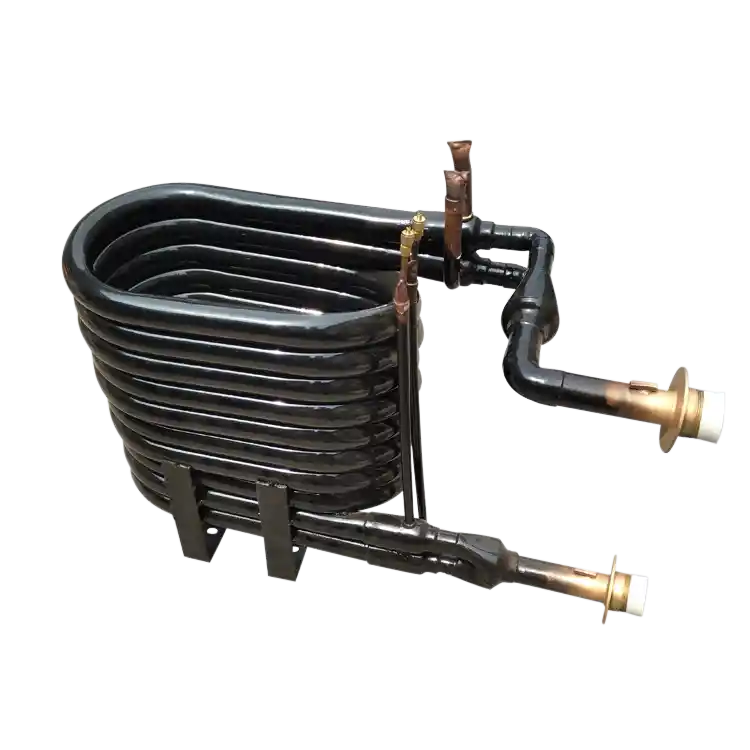1. Introduction
The pressure performance evaluation is an essential quality control measure in the production process of coaxial heat exchangers. This evaluation ensures that the heat exchanger operates within the specified pressure limits and meets the required performance standards. In this article, we will discuss the significance of pressure performance evaluation, testing methods, and the interpretation of test results in the context of coaxial heat exchangers.
2. Importance of Pressure Performance Evaluation
The pressure performance evaluation is crucial for the following reasons:
2.1 Safety
Operating a coaxial heat exchanger within its designed pressure limits is essential for ensuring the safety of the system. Evaluating the pressure performance helps identify any potential issues or weaknesses that may compromise the integrity of the heat exchanger.
2.2 Efficiency
An accurately functioning heat exchanger operates efficiently and maximizes the heat transfer process. Evaluating the pressure performance allows for adjustments and optimizations to enhance the overall efficiency of the heat exchanger.
2.3 Reliability
A reliable heat exchanger must withstand the pressures it is subjected to during operation. Pressure performance evaluation helps identify any weaknesses or defects that may lead to failures or breakdowns, ensuring the long-term reliability of the system.
3. Testing Methods for Pressure Performance Evaluation
Several testing methods can be employed to evaluate the pressure performance of coaxial heat exchangers:
3.1 Hydrostatic Testing
Hydrostatic testing involves filling the heat exchanger with a liquid, typically water, and subjecting it to a predetermined pressure for a specified duration. This test determines the ability of the heat exchanger to withstand the specified pressure without leakage or failure.
3.2 Pneumatic Testing
Pneumatic testing is conducted by pressurizing the heat exchanger with air or another gas. The pressure is gradually increased to the desired level, and the heat exchanger is inspected for any signs of leakage or abnormal behavior.
3.3 Burst Testing
Burst testing is performed to determine the maximum pressure that a heat exchanger can withstand before failure. The heat exchanger is pressurized until it reaches its breaking point, and the pressure at which failure occurs is recorded.
3.4 Cycle Testing
Cycle testing involves subjecting the heat exchanger to repetitive pressure cycles to simulate real-world operating conditions. This test assesses the durability and performance of the heat exchanger under varying pressure conditions over an extended period.
4. Interpreting Test Results
Interpreting the results of pressure performance evaluation requires careful analysis of the test data. The following factors should be considered:
4.1 Leakage
The presence of leakage indicates a failure in the pressure integrity of the heat exchanger. Any signs of leakage during the test should be thoroughly investigated to identify the source and potential remedies.
4.2 Pressure Drop
Monitoring the pressure drop during the test provides insights into the overall efficiency of the heat exchanger. Excessive pressure drop may indicate issues such as blockage, fouling, or internal damage that affect the heat exchanger’s performance.
4.3 Failure Point
Determining the pressure at which the heat exchanger fails (in the case of burst testing) helps establish the maximum pressure capacity of the system. This information is crucial for determining the safe operating limits and establishing design improvements if necessary.
5. Conclusion
Pressure performance evaluation plays a vital role in ensuring the safety, efficiency, and reliability of coaxial heat exchangers. By conducting rigorous testing using appropriate methods and interpreting the results accurately, manufacturers can identify any potential issues, optimize the performance of the heat exchanger, and ensure its compliance with industry standards. Regular evaluation and monitoring of the pressure performance throughout the production process contribute to the delivery of high-quality coaxial heat exchangers that meet the stringent requirements of various applications.


